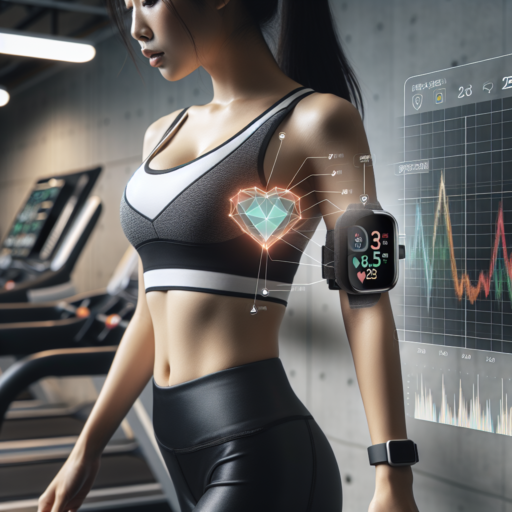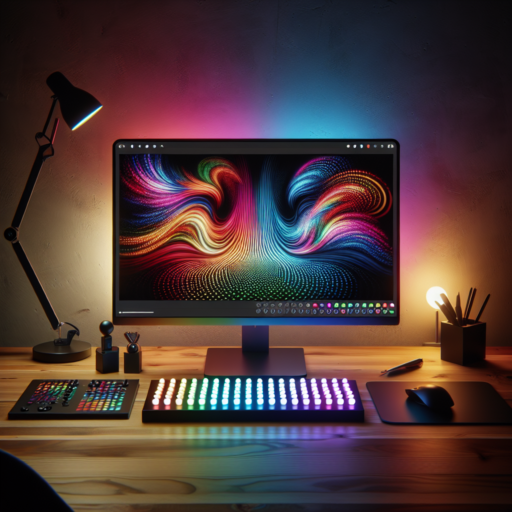No se han encontrado productos.
What is an Optical Heart Rate Monitor?
An Optical Heart Rate Monitor is a sophisticated device designed to measure your heart rate using light-based technology. Unlike traditional heart rate monitors that rely on electrical signals picked up by chest straps, this innovative gadget uses a method known as photoplethysmography (PPG). This approach involves shining a light onto the skin and then analyzing the amount of light that gets reflected back. The changes in light absorption, caused by the blood flow through your veins, allow the device to calculate your heart rate with surprising accuracy.
Optical heart rate monitors are typically found in wearable devices such as fitness trackers and smartwatches. Their appeal lies in their non-intrusive nature, as they can continuously monitor heart rates without the need for cumbersome equipment. This makes them particularly popular among athletes, fitness enthusiasts, and individuals interested in monitoring their health metrics for wellness or medical purposes.
The technology behind these monitors has evolved significantly, offering features such as real-time monitoring, heart rate zone analysis, and even predictions related to stress and recovery levels. However, it’s important to note that while optical heart rate monitors are convenient and provide a plethora of valuable data, they may not always match the precision of traditional chest strap monitors, especially in high-intensity activities or under certain environmental conditions.
How Do Optical Heart Rate Monitors Work?
Optical heart rate monitors have become a staple in the fitness and health monitoring world, offering users a convenient way to track their heart rate without the need for bulky chest straps. At the core of an optical heart rate monitor is a technology called photoplethysmography (PPG). This technology functions by shining a light, typically green LED, onto the skin and measuring the variation in light absorption. These variations correspond with the blood volume changes in your microvascular bed of tissue, allowing the device to calculate your heart rate.
The reason green LEDs are predominantly used in optical heart rate monitoring is due to the optimal absorption and reflection rates of green light by blood. As the heart pumps blood through the body, the amount of blood in the wrist, and thus the light absorption, varies. The optical sensor detects these small fluctuations in light reflected back to the device. Sophisticated algorithms then analyze these variances to determine your heart rate with a high degree of accuracy. This process happens in real-time, enabling continuous monitoring without interrupting your activities.
However, it’s important to note that while optical heart rate monitors offer convenience and non-invasive tracking, various factors can affect their accuracy. These include skin tone, hair density, and even the tightness of the device on the wrist. Furthermore, movements and ambient light can also impact the sensor’s ability to accurately measure heart rate. Consequently, manufacturers continually refine their algorithms and sensor designs to mitigate these issues and provide users with reliable heart rate data.
Benefits of Using an Optical Heart Rate Monitor
Optical heart rate monitors have revolutionized the way individuals track their cardio health and fitness levels. Unlike traditional monitoring devices, these innovative gadgets offer a non-invasive method to accurately measure heart rate, making them a popular choice among athletes and health enthusiasts alike.
Real-Time Monitoring and Convenience
One of the significant advantages of using an optical heart rate monitor is the ability to track heart rate in real-time. This feature allows users to adjust their workout intensity on the fly, ensuring they are training within their target heart rate zones for optimal results. Moreover, the convenience of a wrist-worn device or a smartwatch equipped with an optical sensor means there’s no need for cumbersome chest straps or wired connections, fostering greater adherence to fitness and health monitoring practices.
Enhanced Accuracy and Reliability
Thanks to advancements in technology, modern optical heart rate monitors deliver exceptionally accurate readings. By using light to measure blood flow through the skin, these devices can offer insights into heart rate variability (HRV), stress levels, and even sleep quality, aspects that are pivotal for comprehensive wellness tracking. Such precision makes them invaluable tools for personalized health assessments and tailoring fitness regimes.
Safe and Comfortable for All-Day Wear
The design of optical heart rate monitors emphasizes user comfort and safety, making them suitable for continuous, all-day wear. This feature is particularly beneficial for long-term health monitoring and capturing a complete picture of an individual’s cardiovascular health. With the added bonus of being low-profile and stylish, they seamlessly integrate into daily life, ensuring that heart rate monitoring is both a simple and fashionable part of users’ health routines.
Optical vs. Chest Strap Heart Rate Monitors: Which is Better?
When evaluating heart rate monitors, it’s crucial to understand the differences between optical and chest strap models. Optical heart rate monitors, often found in fitness trackers and smartwatches, measure pulse through the skin using LED lights. They are praised for their convenience and comfort, allowing users to monitor their heart rate continuously without the need for a chest strap. This non-intrusive method has made them a popular choice among casual exercisers and those looking for a simple way to track their fitness.
On the other hand, chest strap heart rate monitors, which detect electrical signals generated by the heart, are often hailed for their accuracy. Worn around the chest, they are directly in contact with the skin, minimizing interference and providing second-to-second heart rate data. This makes them the go-to choice for athletes and fitness enthusiasts who demand precision in their training and performance analysis.
Despite the convenience of optical heart rate monitors, several factors can influence their accuracy, such as skin tone, hair density, and even the type of exercise being performed. Movements that involve significant wrist bending or pressure on the sensor, like weight lifting or boxing, can disrupt the signal, leading to potential inaccuracies. Conversely, chest straps maintain consistent contact and are generally unaffected by such variables, offering a more reliable source of data during diverse workout routines.
Top Features to Look for in an Optical Heart Rate Monitor
When exploring the wide range of options for optimizing your health and fitness regimen, identifying the key features in an optical heart rate monitor can steer you towards making an informed decision. The market is saturated with various models, each touting its unique capabilities. However, particular characteristics stand out for their contributions to accuracy, comfort, and utility.
Accuracy and Sensor Technology
At the forefront of considerations should be the monitor’s accuracy, which is largely dependent on advanced sensor technology. Look for devices equipped with multi-wavelength sensors that can penetrate the skin more effectively, providing readings that closely match those from traditional chest straps or ECG monitors. Additionally, models boasting real-time analysis and algorithm-based corrections ensure that the data reflects your true physiological condition, adjusting for factors like skin tone and movement artifacts.
Comfort and Wearability
The design and build of an optical heart rate monitor play critical roles in its wearability over long periods. Monitors that feature lightweight materials and a compact, ergonomic design minimize discomfort and the likelihood of interference with daily activities or vigorous exercises. Furthermore, adjustable straps or alternative wearing options like wristbands or arm bands offer versatility while ensuring the device remains secure and its readings accurate.
Connectivity and Compatibility
In today’s interconnected world, the ability of an optical heart rate monitor to seamlessly integrate with other devices is indispensable. Opt for models that support Bluetooth or ANT+ connectivity, allowing you to sync data effortlessly with smartphones, sports watches, and fitness apps. This integration not only simplifies the process of tracking and analyzing your heart rate data but also enhances the overall usability of the monitor, providing a comprehensive view of your health and fitness progress.
Accuracy of Optical Heart Rate Monitors: What the Research Says
Optical heart rate monitors have become a staple in fitness trackers and smartwatches, promising to deliver accurate heart rate data conveniently. Research comparing these optical devices with traditional chest strap monitors reveals interesting insights. The accuracy of optical heart rate monitors largely depends on various factors such as the type of activity, the specific model of the device, and the individual’s physiology. Studies have shown that while these monitors can provide reasonably accurate readings for resting heart rate, their accuracy may vary during intense physical activities.
Factors Influencing Accuracy: Several studies underscore the importance of understanding the factors that can influence the accuracy of optical heart rate monitors. For instance, motion artifacts – caused by the movement of the user – have been cited as a significant challenge. Additionally, the fit of the device on the wrist and the skin tone of the user can also impact the reading’s precision. It’s clear that while optical technology offers the convenience of non-invasive heart rate monitoring, it also comes with its set of variables that can affect accuracy.
Given the advancements in technology, researchers are continually exploring ways to enhance the precision of these monitors. New algorithms are being developed to minimize the impact of motion artifacts and improve the algorithms that interpret the data collected by the optical sensors. As this technology evolves, the gap between the accuracy of chest straps and optical monitors is expected to narrow.
How to Wear and Use an Optical Heart Rate Monitor Effectively
Optical heart rate monitors offer a convenient and non-intrusive way to keep track of your heart rate during exercise and daily activities. Providing accurate readings, they have become a go-to for athletes and health enthusiasts alike. However, for these devices to work effectively, it’s essential to wear and use them correctly. Here, we dive into the key steps to maximize the efficiency of your optical heart rate monitor.
Positioning Your Optical Heart Rate Monitor
For precise readings, the placement of your heart rate monitor plays a significant role. Ensure the device is snug against your skin but not too tight to impede circulation. Ideally, it should be worn on the upper portion of your wrist, just a finger-width above the wrist bone. This location is optimal for detecting your pulse. Remember, too loose, and it might move, affecting accuracy. Too tight, and it could interfere with blood flow, also skewing data.
Keeping the Sensor Clean
Maintaining the cleanliness of your heart rate monitor is crucial for consistent accuracy. Dirt, sweat, or any obstruction between the sensor and your skin can lead to erratic or inaccurate readings. Regularly clean the sensor and the area of your skin it touches with a soft, damp cloth to ensure it functions correctly. This simple step can significantly improve the performance of your device.
Understanding how to properly wear and use your optical heart endorses not only the accuracy of the data collected but enhances your ability to monitor your health and fitness levels effectively. By positioning it correctly, ensuring a clean contact surface, and wearing it as intended, you’re set to get the most out of your device, making it a reliable companion in your wellness journey.
Best Optical Heart Rate Monitors on the Market
When it comes to tracking your heart rate efficiently and accurately, optical heart rate monitors stand out as the go-to device for fitness enthusiasts and health-conscious consumers alike. Unlike their chest strap counterparts, these gadgets use advanced light-based technology to monitor your pulse through your skin, offering convenience and comfort without compromising on precision. The market is brimming with options, each promising a plethora of features to cater to a wide range of needs and preferences.
Selecting the best optical heart rate monitor involves weighing factors such as accuracy, wearability, battery life, and additional features like connectivity with other devices and fitness tracking capacities. Brands like Garmin, Fitbit, and Wahoo have consistently pushed the envelope, introducing innovative products designed to meet the ever-evolving demands of their users. From sleek wristbands perfect for daily wear to versatile watches equipped with multisport capabilities, the variety is vast, making the task of choosing the right one both exciting and daunting.
Top Picks for Optical Heart Rate Monitors
- Garmin Forerunner Series: Known for its precision and durability, suitable for runners and triathletes.
- Fitbit Charge 4: Offers excellent battery life and a comprehensive suite of fitness tracking features, making it ideal for everyday use.
- Wahoo TICKR FIT: Stands out for its arm band design, providing an alternative for those who prefer not to wear a device on their wrist.
Advancements in technology have brought optical heart rate monitors a long way, enabling them to offer not just heart rate monitoring but also insights into overall fitness levels, sleep quality, and stress, among other health-related metrics. This makes them not just a tool for athletes but for anyone looking to gain a deeper understanding of their health and well-being. As we continue to see innovations in this space, the future of heart rate monitoring looks promising, with even more personalized and accurate devices on the horizon.
Maintaining Your Optical Heart Rate Monitor for Optimal Performance
Maintaining an optical heart rate monitor is crucial for ensuring its accuracy and longevity. These devices, which have become a staple for fitness enthusiasts and health-conscious individuals, rely on proper care to function effectively. By following a few simple maintenance steps, you can keep your device performing at its best.
Cleaning Your Device
Regular cleaning is key to the upkeep of your optical heart rate monitor. Sweat, dirt, and oils from your skin can interfere with the sensor’s ability to accurately read your heart rate. Use a soft, damp cloth to gently wipe the sensor area. Make sure the device is turned off and removed from your wrist before cleaning. Avoid using abrasive materials or harsh cleaning agents as they can damage the sensor’s surface. For devices that are waterproof or water-resistant, a rinse under mild, soapy water can also help remove stubborn residues.
Software Updates
Like any tech gadget, your optical heart rate monitor benefits greatly from regular software updates. Manufacturers often release updates that improve accuracy, add new features, or correct existing issues. Ensure your device is connected to its corresponding smartphone app or computer software to receive these updates. Regularly check for updates and install them promptly to keep your heart rate monitor functioning smoothly.
Note: Storing your device properly when not in use can also prolong its life. Avoid exposing it to extreme temperatures or direct sunlight for prolonged periods. When storing for an extended time, remove any batteries if possible to prevent leakage. Following these simple guidelines can significantly enhance the performance and longevity of your optical heart rate monitor.
Frequently Asked Questions About Optical Heart Rate Monitors
Optical heart rate monitors have become increasingly popular among fitness enthusiasts and individuals monitoring their health. With this growing interest comes a set of common questions related to their use, accuracy, and features. Here, we aim to shed light on some of these frequently asked questions, helping you understand the capabilities and limitations of optical heart rate monitors.
One frequently asked question is about the accuracy of optical heart rate monitors. These devices use light-based technology to gauge blood flow, which is then algorithmically translated into heart rate readings. While they are highly accurate for steady-state activities like running or walking, they can face challenges with rapid changes in heart rate. Factors such as skin tone, tattoo presence, and fit of the device can also influence accuracy.
Another common query revolves around the difference between optical heart rate monitors and chest straps. Optical monitors offer the convenience of wrist-based tracking, making them more comfortable and accessible for continuous monitoring. In contrast, chest straps, which measure electrical signals related to heart activity, can provide more precise readings during high-intensity activities but may be deemed uncomfortable for long-term wear by some users.




